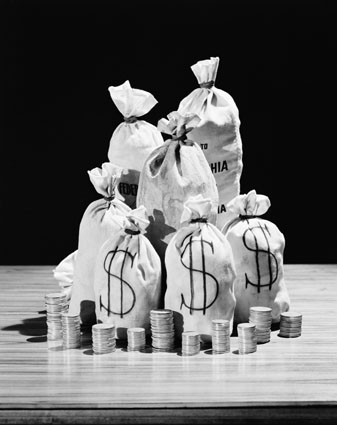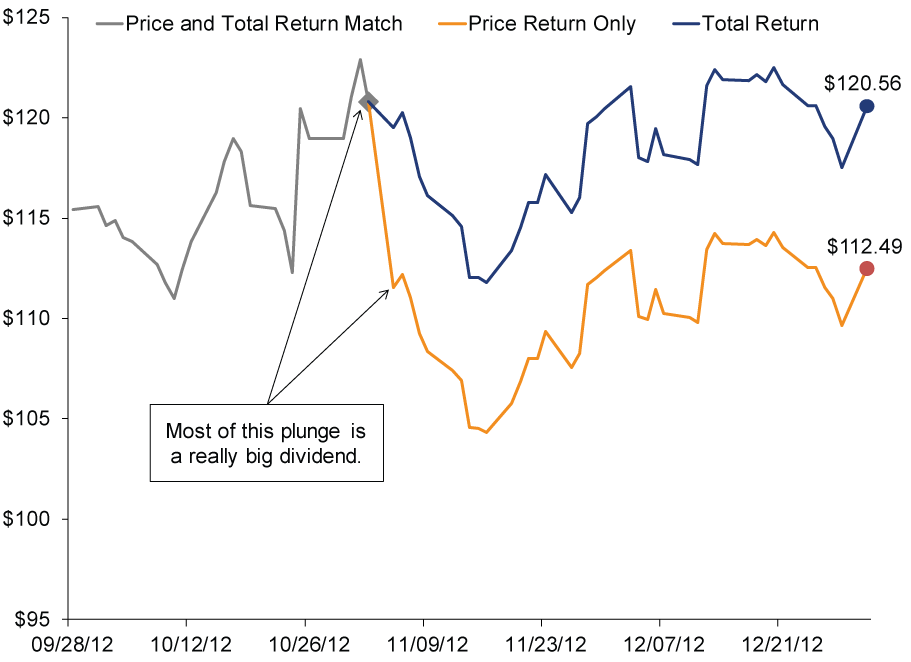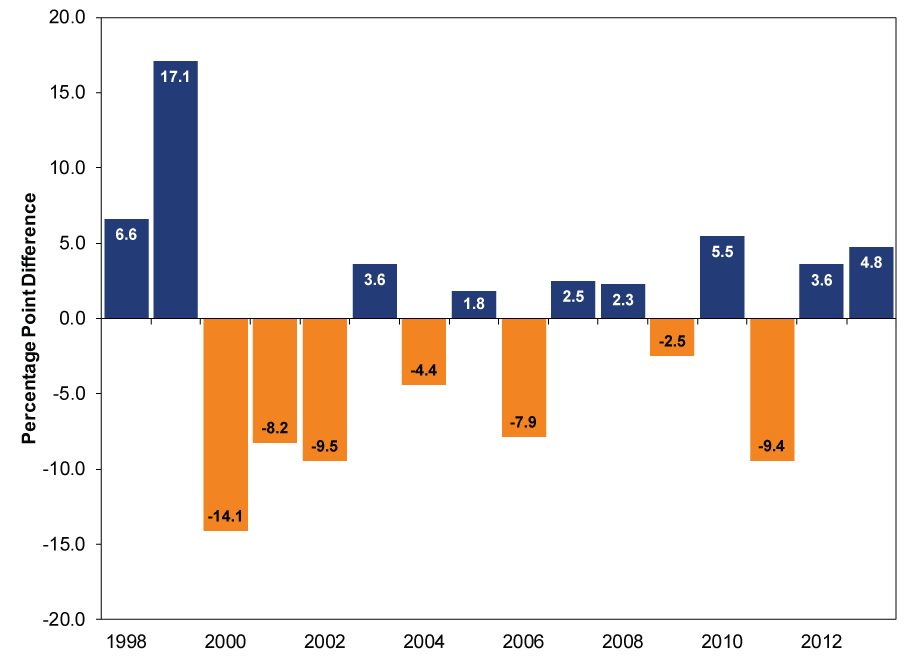Personal Wealth Management / Market Analysis
When Does Focusing on Dividends Actually Pay Dividends?
In the long run, stocks are stocks-there is no permanently "better" stock. And yes, that includes high-dividend stocks.
For investors, focusing on high-dividend strategies alone is a risky move. Source: H. Armstrong Roberts/Getty Images.
The only factor with permanence in markets is that there is no permanence. No style, size, region, sector, type or ... ummm ... flavor? of stock is inherently superior for all of time. Stocks are stocks. This same logic applies to dividend paying stocks, which are, again, stocks. They are not "safer" stocks. They are not higher returning. They are stocks, with all the same risk and return characteristics as non-dividend paying stocks. However, just because stocks are stocks doesn't mean a strategy is a strategy-and focusing on dividend payers alone may not be an optimal strategy.
Major media continues to be confused on this point. While some have caught on after two years of underperformance that dividend payers are not inherently superior, others still seem confused. Let's be clear: Dividends aren't bad. They are a part of return. But you still must consider what the price of the stock does-if not, you're missing a pretty important factor, and one that can easily mislead you.
A dividend is not free money falling from the sky. When a firm pays a dividend, it subtracts the amount per share paid from the stock's price. This is always and everywhere true-cash is valuable!-but it's often hard to see because the amounts involved aren't discernible from normal market gyration. However, it can be illustrated. In Exhibit 1, I've plotted Wynn Resorts price and total return around a special, one-time $8 per share dividend they paid in late 2012.i The stock price reflected the dividend payment after the close on Friday, November 2, 2012. It opened right about $8 lower on the following Monday. (We don't think the stock had a case of the Mondays-it's the dividend.)
Exhibit 1: The Dividend Difference-Wynn Resorts Total Return Vs. Price Return
Source: FactSet, as of 06/03/2014. Wynn Resorts Total and Price Returns for the period 09/28/2012 - 12/31/2012.
Note the wide gap that opens between price-level (that is what you see quoted on CNBC and elsewhere) and total returns (returns that factor in dividends). That is explicable only because the share price is reduced by the cash paid out. The payment reduced the price-dividends aren't free money.
When you look to total return, you see a more complete picture. Using the MSCI World and MSCI World High Dividend Yield Indexes as proxies for standard stocks and high dividend-paying stocks, Exhibit 2 shows leadership flip-flops between the two. Global high dividend stocks have outperformed in seven of the last 15 years, or right about half the time. But they haven't the last two.
Exhibit 2: MSCI World Index Returns Minus MSCI World High Dividend Yield Index Returns
Source: FactSet, as of 06/03/2014. All returns are calendar year returns including net dividends, 12/31/1997 - 12/31/2013.
All the same, some still claim dividend stocks are safer than other stocks. But let's follow this line of logic. Say you buy 500 shares of a $50 stock paying a hefty 5% dividend. $2.50 per share. What's left is $47.50, all else equal. If the stock crashes to zero immediately thereafter, you'll lose only 95% of your investment (if you didn't reinvest). You'll have $1,250 of your initial $25,000 investment. That's better than if you had a non-dividend payer that crashed to zero, I give you that. But is this what masquerades as "safety?" I doubt you'd do the happy dance over that one either way. And if the stock doesn't go to zero, and merely sees volatility, holding cash is likely to reduce your long-run return. Cash is a low returning asset.ii Finally, consider: Firms frequently slash or eliminate dividends when times are tight, which also tends to be when their share prices perform worst. A bit of a double whammy if you bought into those "safe" dividends.
We've seen ample evidence of this in recent years. Here are a few stocks that were once considered high dividend-yielding:iii
- Northern Rock (Dividend eliminated, firm defunct, 2008)
- Royal Bank of Scotland (Dividend eliminated, nationalized by the British, 2008)
- Allied Irish Banks (Dividend eliminated, nationalized by the Irish, 2010)
- National City Corporation (Bankrupt then acquired, 2008)
- Wachovia (Bankrupt then acquired, 2008)
- BP plc (Eliminated its dividend for a period during 2010)
- The New York Times (Eliminated its dividend in 2008, reinstated in 2013 at a vastly reduced rate)
There are many more. Dividends aren't safe and secure. Dividend stocks are no safer than non-dividend stocks.
Now, it is clearly possible to build a high-dividend portfolio without getting one of these lemons. But dividend-focused strategies tend to be less diverse than those that aren't slaves to yield. In October 2007-the beginning of the Financials-led bear market-Financials dominated the high-dividend yield market, comprising 38% of the MSCI World High Dividend Yield versus the MSCI World at 24%.iv Though the sector weightings are different today, the high dividend universe was and still is less diverse than the global market overall. Less diversification often means more risk, not less. Though there is no real, fundamental difference when comparing an individual high-dividend stock in a yield-focused strategy versus a low payer in a non-yield focused strategy, you cannot say the same thing about the overall strategies. A focus on high dividends may pay big dividends sometimes. But other times, it's likely to do the opposite.
Stock Market Outlook
Like what you read? Interested in market analysis for your portfolio? Why not download our in-depth analysis of current investing conditions and our forecast for the period ahead. Our latest report looks at key stock market drivers including market, political, and economic factors. Click Here for More!
i Wynn Resorts was selected only because it paid a very large one-time dividend that illustrates the point. I am not suggesting you buy the stock, gamble or analogize the stock market to a big casino. It's a misleading analogy. You show me a casino that pays out as frequently as stocks and I'll show you a casino stock to sell short.
ii You need not focus on dividends to get this low returning asset either, but that's a topic for another time.
iii All these were members of the MSCI World High Dividend Yield Index.
iv Source: Factset, MSCI World and MSCI World High Dividend Yield Financials sector constituency as of 10/31/2007.
If you would like to contact the editors responsible for this article, please message MarketMinder directly.
*The content contained in this article represents only the opinions and viewpoints of the Fisher Investments editorial staff.
Get a weekly roundup of our market insights
Sign up for our weekly e-mail newsletter.

See Our Investment Guides
The world of investing can seem like a giant maze. Fisher Investments has developed several informational and educational guides tackling a variety of investing topics.








